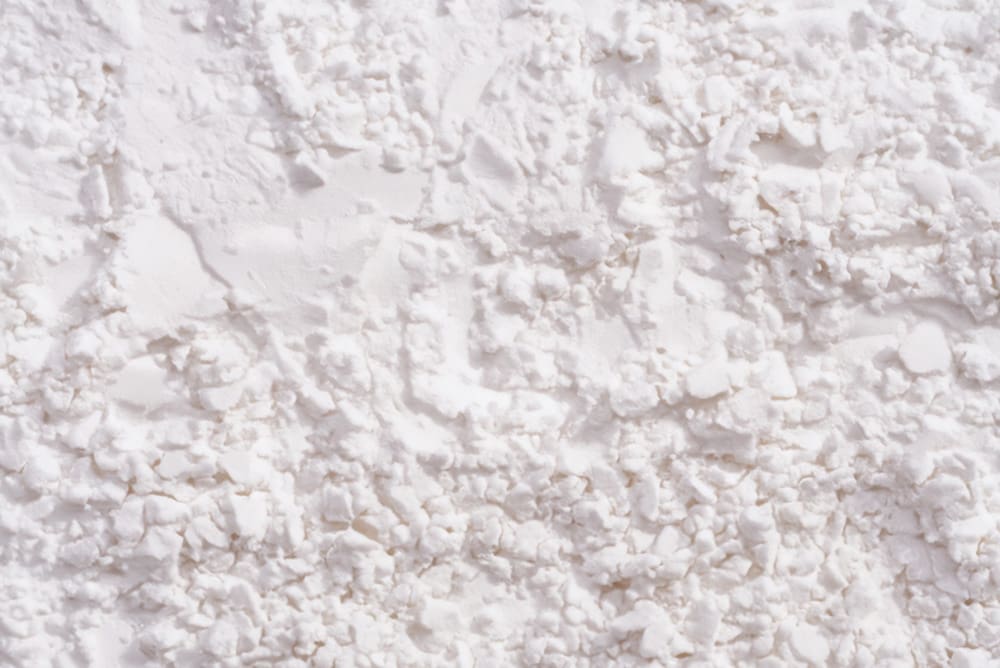Key Takeaways
- Talcum powder can be contaminated with asbestos, posing health risks such as ovarian cancer and mesothelioma.
- Alternatives like cornstarch, arrowroot, tapioca starch, kaolin clay, and rice powder are safer and effective.
- It’s important to check product labels and opt for items with safety certifications.
- Educating oneself about product ingredients and using resources like EWG’s database can guide safer choices.
Safer Alternatives to Talcum Powder
For decades, talcum powder was a staple in many homes, loved for its ability to keep skin dry and comfortable. But over the years, growing concerns about its safety have made many people rethink its use. Talc, the primary ingredient in talcum powder, has been found to be at risk of contamination with asbestos—a dangerous carcinogen linked to serious health issues like ovarian cancer and mesothelioma.
This has led to an urgent search for safer alternatives that offer the same benefits without the potential dangers.
Why Consider Alternatives?
If you or someone you love has been affected by ovarian cancer, have you considered talcum powder as a cause?
Research shows that women who have used talcum powder in their genital area may have a higher risk of developing ovarian cancer. It’s believed that tiny particles of talc can travel through the reproductive system, causing inflammation that may lead to cancer.
Additionally, when talc is contaminated with asbestos, it can cause respiratory problems or even mesothelioma, a rare form of lung cancer. Although some manufacturers claim their talc is asbestos-free, the risk of contamination and the availability of safer alternatives have prompted many to look elsewhere for a solution.
Safer Alternatives to Talcum Powder
Thankfully, there are plenty of natural and synthetic alternatives that can offer the same benefits as talcum powder without the associated risks. Here are a few you might consider:
1. Cornstarch
Cornstarch is probably the most popular alternative to talcum powder. It’s a natural, plant-based powder derived from corn that effectively absorbs moisture and reduces friction. You can find cornstarch in many products like baby powders, deodorants, and dry shampoos. It’s affordable, easy to find, and generally non-irritating. However, if you’re prone to yeast infections, it’s worth noting that cornstarch can sometimes encourage yeast growth in warm, moist areas.
2. Arrowroot Powder
Arrowroot powder, sourced from the root of the Maranta arundinacea plant, is another excellent alternative. It has a fine, silky texture and is known for its moisture-absorbing qualities. Perfect for sensitive skin, arrowroot powder is often found in DIY skincare products. While it is a great choice for those with allergies or sensitivities, it can be a bit more expensive and harder to find compared to cornstarch.
3. Tapioca Starch
Tapioca starch, derived from the cassava plant, offers a smooth, lightweight texture similar to talcum powder. It is highly absorbent and hypoallergenic, making it a great choice for those with sensitive skin or who are prone to infections. Tapioca starch does not promote yeast growth, making it a safer choice for some. However, it can also be more costly and less widely available than cornstarch.
4. Kaolin Clay
Kaolin clay is a gentle, natural mineral that has been used in skincare for centuries. It’s excellent for absorbing excess oil and moisture while still being kind to sensitive or acne-prone skin. While kaolin clay is often found in facial masks and body powders, it may not be as effective in very humid conditions where a stronger moisture absorber might be needed.
5. Rice Powder
Rice powder has been a beauty secret in Asian cultures for hundreds of years. It’s great for controlling excess oil, leaving a smooth, matte finish, and even offers some antioxidant protection for the skin. However, it might need to be reapplied throughout the day in very humid climates, and it can sometimes be tricky to find outside of specialty or international markets.
Is This Something You Should Know About?
Choosing cornstarch, arrowroot, tapioca starch, kaolin clay, or rice powder can reduce everyday risk, but many women used talcum powder for years before safer options were widely embraced. If ovarian cancer entered your life after regular talc use, understanding whether exposure could be a factor may help you protect your rights and your family’s future.
A recent scientific review published in the Journal of Clinical Oncology confirmed that some women who used talc-based products faced nearly 3X the risk of developing ovarian cancer. After years of growing evidence, multiple multimillion-dollar awards have already been secured for women with ovarian cancer.
Join the Many has helped thousands of women and their families explore whether they may qualify for compensation.
If you used talc-based baby powder, you may want to find out if this applies to you. It’s easy to start — just answer two quick questions, and a Join the Many specialist will reach out to guide you through your options.
There’s no cost and no obligation. It’s simply a way to make sure you’re informed about every resource that could help you.
Ovarian Cancer Compensation Quick, No-Cost Review Answer the questions below to find out if you qualify for compensation.
"*" indicates required fields
Tips for Choosing Safe Products
Choosing a safer alternative to talcum powder involves becoming an informed consumer. Here are some tips to help you find products that prioritize your safety:
- Check the ingredients: Always read the ingredient list carefully. Look for products that clearly state they are free from talc, asbestos, and other potentially harmful substances like parabens or synthetic fragrances.
- Know your ingredients: Familiarize yourself with natural ingredients like cornstarch, arrowroot powder, and kaolin clay. If you come across unfamiliar ingredients, take a moment to research them or consult reliable resources.
- Look for certifications: Choose products certified by organizations like USDA Organic, Ecocert, or the Environmental Working Group (EWG). These certifications indicate that the products meet high safety and environmental standards.
- Use trusted resources: Utilize resources like the EWG's Skin Deep database to research the safety of products and their ingredients. This database provides safety ratings and helps you understand potential health risks associated with different products.
- Beware of greenwashing: Some brands may use terms like “natural” or “organic” without substantiating their claims. Take a closer look at the company’s transparency regarding their ingredients and manufacturing practices.
As we become more aware of the potential health risks associated with talcum powder, it's comforting to know there are safer alternatives available. Whether you choose cornstarch, arrowroot powder, tapioca starch, kaolin clay, or rice powder, each offers unique benefits to help you stay comfortable and dry without the worry of harmful ingredients.
By making informed choices and looking for trusted certifications, you can enjoy the benefits of moisture-absorbing powders while prioritizing your health and safety.
Frequently Asked Questions
Talcum powder has been linked to respiratory issues and, with long-term use, potentially to cancers such as ovarian cancer due to possible asbestos contamination.
Common alternatives include cornstarch-based powders, arrowroot starch, baking soda, and oat flour, all of which are safer for routine use on skin.
Cornstarch is generally safe but may exacerbate yeast infections in sensitive areas. It's recommended for those without such concerns.
Yes, baking soda can be used as a deodorant powder. It neutralizes odors effectively but should be used sparingly on sensitive skin to avoid irritation.
For infants, oat flour or kaolin clay-based powders are recommended as they are gentler and free from irritants commonly found in talcum powder.




